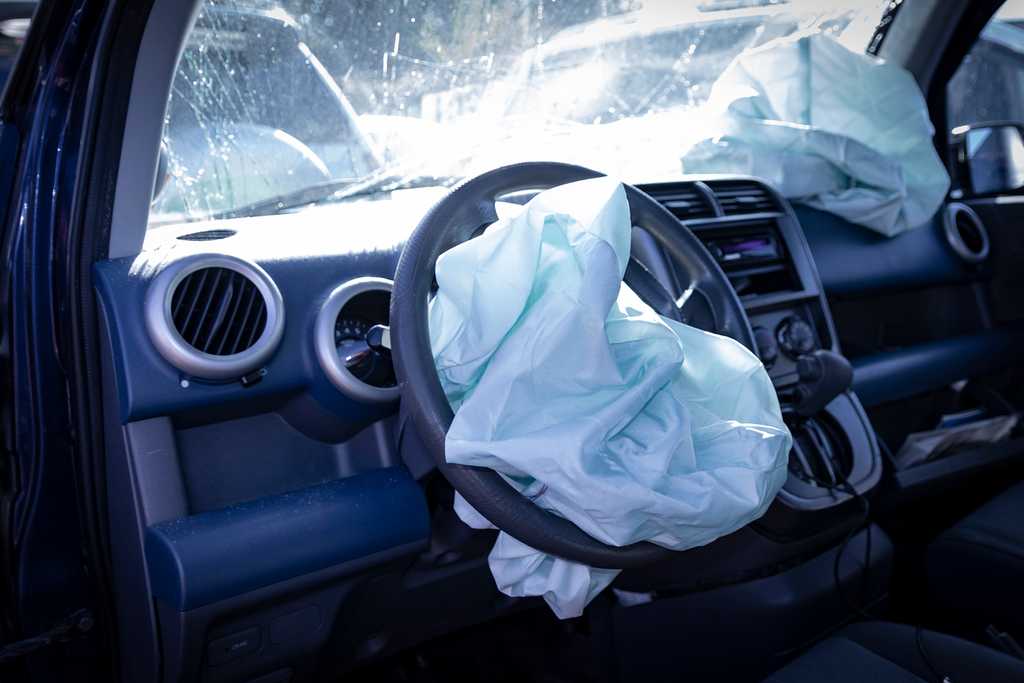Car repairs are sometimes expensive, and they can disrupt your daily life while you wait to get your car out of the shop. Sometimes, however, repairing a car may not be worth all the money, time, and effort. A car that’s severely damaged can be declared a “total loss.”
Insurance companies declare a situation with a vehicle a total loss for a few reasons. The main drawback is that insurance won’t provide any coverage if this is the case. In this total loss guide, you’ll learn more about how a total loss can happen along with what your next steps should be if you find yourself in this situation.
What does it mean when your car is a total loss?
A total loss occurs when the total cost to repair a car exceeds its actual value. For example, if a car costs $5,500 to fix but it’s only valued at $5,000, it is a total loss.
A car can also be named a total loss when repairs can not be made. If the manufacturer has stopped making parts, or if the condition is just so bad after an accident that it would basically require rebuilding the entire car, it is considered a total loss.
When does an insurance company consider a car totaled?
An insurance company considers a car a total loss when it is assessed by an adjuster, and the cost exceeds the value. After an accident, the car must be taken to an auto shop and assessed for damage. From there, the repair company will quote how much it will cost to fix the vehicle and send that number to the insurance company.
While the auto repair shop may claim it’s a total loss, the insurance company needs to agree based on their assessment of the value of the car before the crash.
How is the value of a total loss vehicle calculated?
Many states use what’s called a total loss formula (TLF) to calculate the value of a vehicle. The total loss threshold (TLT) allows your insurance company to declare a total loss once the damage reaches a certain level. In Tennessee, the TLT is 75% meaning if the repairs total at least 75% of the car’s value, it can be determined a total loss. Other states like Florida have an 80% TLT, and Colorado has a 100% TLT.
The next variable to consider is the actual cash value (ACV) of the car. To determine the ACV, the insurance company must look at factors such as mileage, the age of your car, signs of wear and tear, and accident history. It’s also a good idea to have an appraiser look at the car. That way if they appraise the car for a higher value than the insurance company, you have room to negotiate on the ACV and make a counteroffer.
In many states, they will use the sum of the TLF plus the amount of repairs and see if that exceeds the ACV. If it does exceed the car’s value, then it will be considered a total loss.
What happens when your car is declared a total loss
If your car is considered a total loss, the insurance company will pay you the ACV instead of paying for any repairs. Again, the ACV represents the value of your vehicle before the damage that led to it being declared a total loss.
How much insurance pays depends on the type of coverage you have. If you have comprehensive coverage, you’ll receive the full ACV minus your deductible. Some states will include taxes and fees associated with purchasing a new car.
If you still owe money on the car at the time it is totaled, your insurance company will pay your lender first. The payout may not be enough to cover your loan since your vehicle’s value depreciates over time. This is where gap insurance can come in handy. Gap insurance is an optional type of car insurance coverage that helps cover the difference between your car’s ACV and the amount you own on the loan if the car gets totaled or stolen.
What to do when your car is totaled
If your car gets totaled or you think it’s totaled there are a few things you’ll need to do. First, contact your insurance provider as soon as you can and file a claim. The claims process could take some time and you don’t want to be without a car or have this unresolved for too long.
Keep in mind that you’ll need property damage liability (PD) or comprehensive or collision insurance coverage in order to receive an insurance payout. Property damage liability insurance is mandatory in each state and you’ll need to file a claim against the other driver’s PD insurance to receive a payout for a total loss.
Next, tow the vehicle to an auto shop that your insurance company approves to get it assessed for damage. The shop will do a thorough check of the car’s condition and estimate the repair costs. From there, your insurance company can determine the car’s ACV and depending on the calculations and name the car as a total loss.
At this point, you will need to gather all the documents for your car such as the title and sales receipt if you have it. When the insurance company provides you with a payout amount, don’t be afraid to counter offer if you feel it’s too low. You can check your car’s value on sites like Kelly Blue Book or get it appraised if you feel the insurance company is way off.
Finally, begin shopping for a new car once you receive the payout and make sure to check the status of your auto loan to get it paid off if you were financing or leasing the car.
Summary
If you are involved in a collision and your car is declared a total loss, be sure to work with your insurance company and respond promptly to resolve your claim. Don’t be afraid to negotiate and do your research to ensure that your payout is fair. Also, consider gap insurance if you are financing a car to ensure that you won’t be on the hook for a lump sum amount if your car does get totaled.

